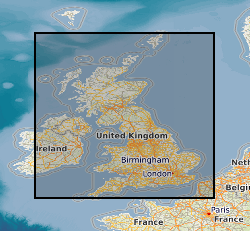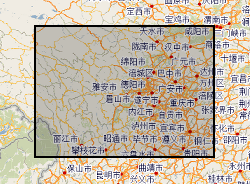Catchment
Type of resources
Available actions
Topics
Keywords
Contact for the resource
Provided by
Years
Formats
Update frequencies
-

BGS GeoScour provides river scour susceptibility information for Great Britain using a three-tiered data provision allowing increasing levels of understanding at different resolutions from catchment to local (channel/reach) scales. GeoScour includes 11 GIS layers, providing information on the natural characteristics and properties of catchment and riverine environments for the assessment of river scour in Great Britain. The data product fills a gap in current scour modelling, with the input of geological properties. It provides an improved toolkit to more easily assess and raise the profile of scour risk, now and in the future, to help infrastructure providers and funders prioritise resources, identify remedial works to preclude costly and prevent disruptive failures. The data product has broad applications through its adaptation to suit multiple types of asset likely to be affected by fluvial erosion. The GeoScour Data Product is designed to be used by multiple stakeholders with differing needs and therefore, can be interrogated at a number of levels. Tier 1 data provides a summary overview of the catchment characteristics, typical response type, and evolution. It can be used as a high-level overview for incorporation into catchment management plans, national reviews and catchment comparisons. Tier 2 data are available as smaller catchment areas and focusses on providing data for more detailed catchment management, natural flood management and similar uses. It analyses geological properties such as flood accommodation space, catchment run-off potential, and geomorphology types, as well as additional summary statistics of key environmental parameters such as protected sites and urban coverage. Tier 3 data provide the detailed riverine information that is designed to be incorporated into more complex river scour models. It provides the baseline geological context for river scour development and processes and identifies important factors that should be considered in any scour model. Factors such as material mineralogy, strength and density are key properties that can influence a river’s ability to scour. In addition, an assessment of river fall, sinuosity and flood accommodation space is also provided. This data is of use to all users assessing the propensity for river scour for any given reach of a river across Great Britain. Tier 1 and 2 data are available with an OGL, Tier 3 data is licenced.
-

Hazards data in Sichuan (Dechang, Anning River catchment), China. Data include rainfall, earthquake, river catchment, boundary, geological map, soil map, land-cover map, road-map, DEM.
-

This image dataset was captured as part of the operation of a river gauging station on the Virkisá River, SE Iceland. The station formed part of the BGS Iceland Glacier Observatory network of sensors, deployed between 2009 and 2020 in order to characterise and identify glacial, geomorphological and hydrological drivers and processes and their timescales across the deglaciating Virkisjökull-Falljökull catchment in SE Iceland. The records presented here begin in September 2011 with the installation of the river gauging station, and continue to August 2020. Responsibility for the station passed to the Icelandic Meteorological Office in January 2018. The gauge is understood to remain operational as at August 2024. The data complements the published meteorological and river gauging datasets published here, and will be of use to researchers and students interested in the hydrology of a rapidly deglaciating landscape, including anyone interested to follow up on the various research studies published from this site in the international literature.
 NERC Data Catalogue Service
NERC Data Catalogue Service